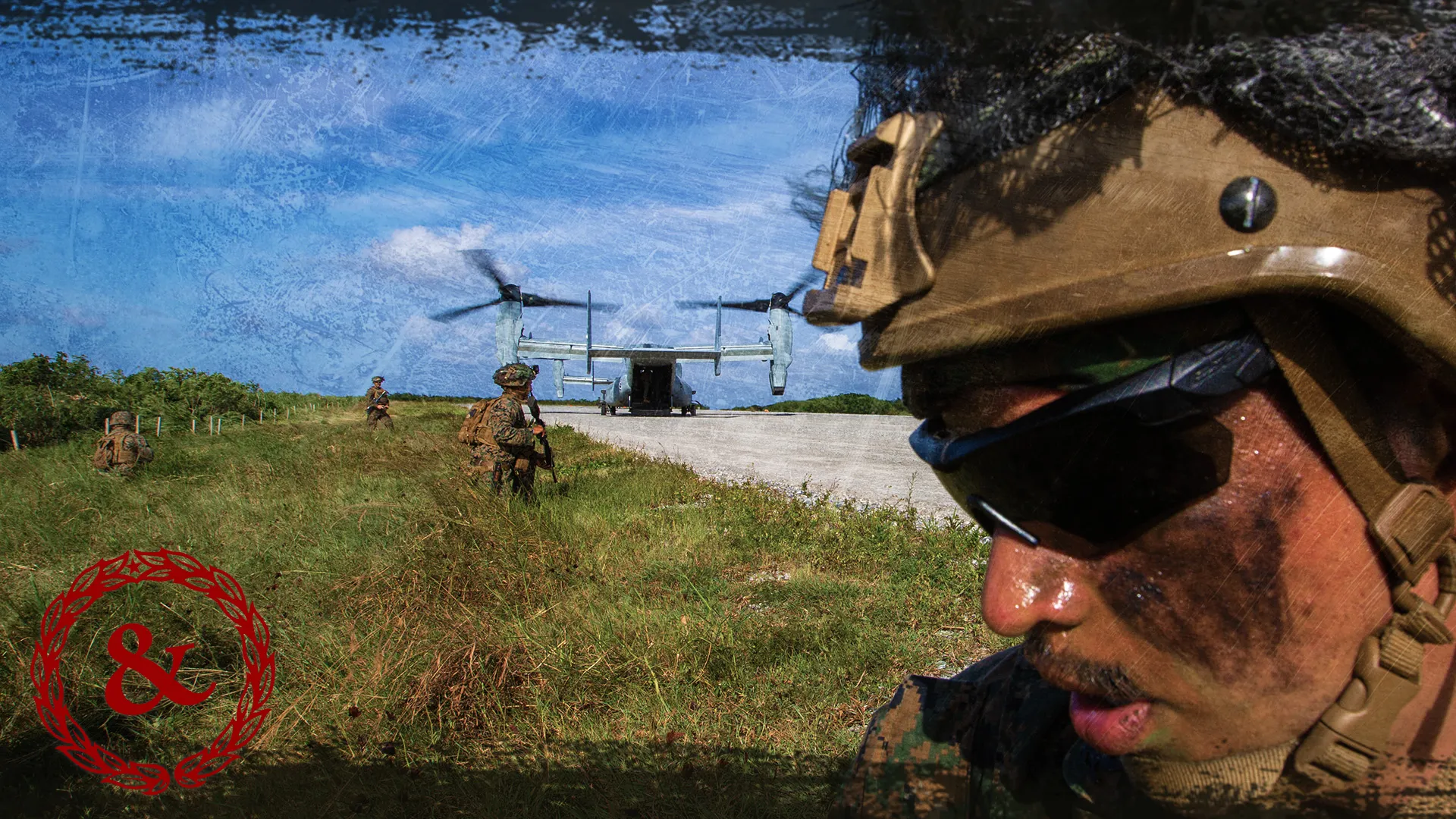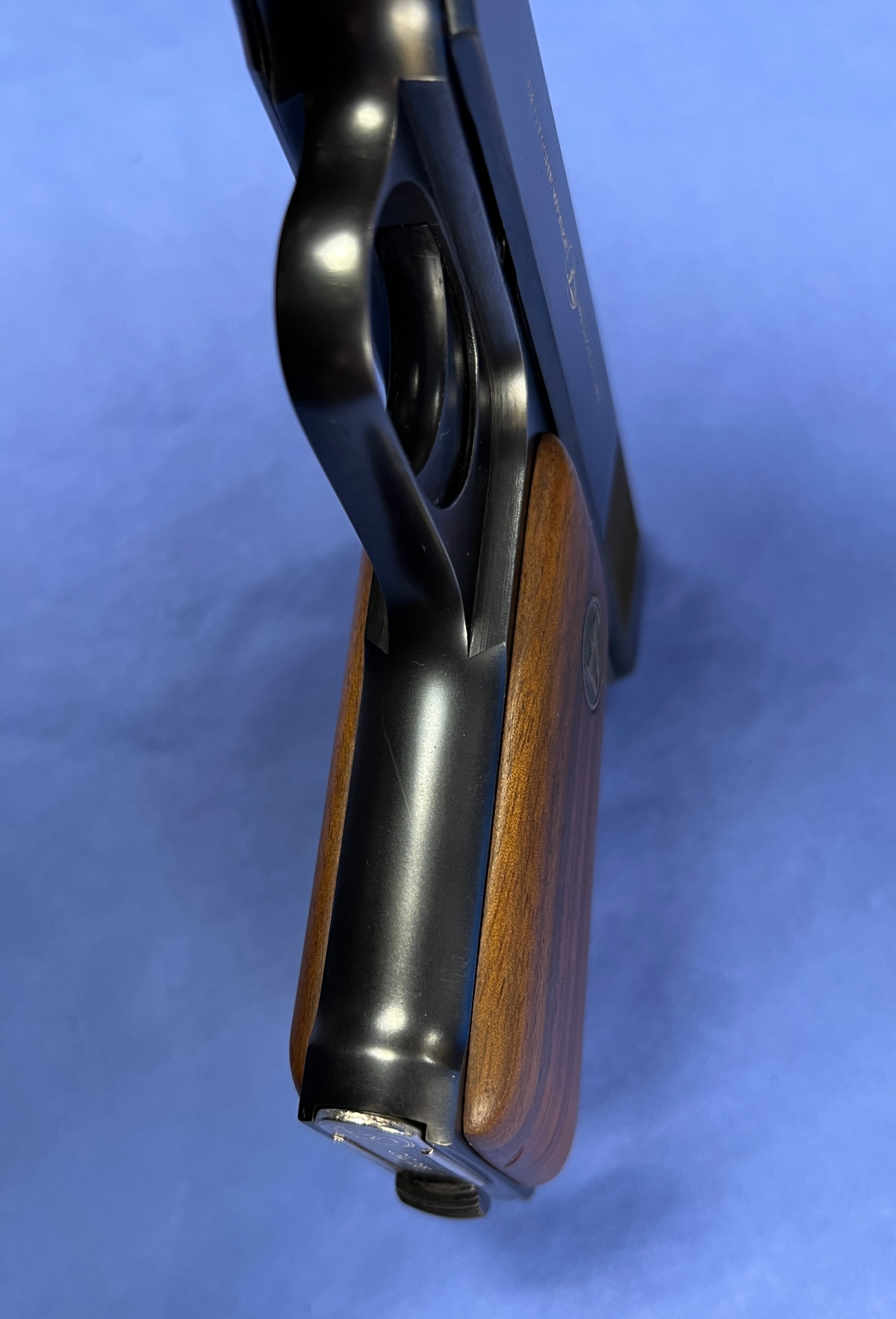
In 1989, then-Commandant of the Marine Corps Alfred M. Gray reenergized the post-Vietnam Marine Corps with the publication of Warfighting, a visceral statement of the Corps’ combat, leadership, and adaptability doctrine that spoke as much to who Marines are as what they do. Thirty-three years later, the thin manual is known today as Marine Corps Doctrinal Publication One and still canonizes the fighting philosophy of the Marines. But Warfighting has always been controversial. It was written quickly and quietly, by one Marine captain working directly for the Commandant and with minimal input from the broader Marine Corps. Gray’s approach — jamming through innovation against strong headwinds — seems echoed today by Commandant David H. Berger’s efforts to change the design of the Corps with an audacious document called Force Design 2030 (FD 2030), a fact that seems somewhat ironic given the stiff opposition he faces from some of Warfighting’s most ardent advocates.
In Warfighting, the sole author, a Marine captain named John Schmitt, synthesized martial theories and enduring truths about the nature of war. War is a violent struggle between two hostile, independent, and irreconcilable wills; dynamic, uncertain, and chaotic. War is a process of continuous mutual adaptation, of give and take, move and countermove. Speed is a weapon; boldness a source of combat power. Sharp observers of the current war in Ukraine see these truths played out daily. Warfighting is a relatively simple statement of the essential beliefs of the Corps, intentionally written for riflemen and commanders alike. Therein lies its genius.
But Warfighting has always had its critics, and with only one minor revision in 1997, it is aging. In The Blind Strategist, Stephen Robinson rips Warfighting down to the studs. His analysis of American wars since the document’s inception finds far more examples of Marines professing adherence to Warfighting’s maneuver warfare than any actual execution thereof. Moreover, the elegant language that captivated some Marines in the late 1980s reads like a boring history lesson for some Marines today. In 2020, Capt. Walker Mills argued that Warfighting teeters on the verge of irrelevance for its lack of a mention of irregular war, great power competition, or even the Marines’ naval character. He called it an industrial age philosophy for an information age Marine Corps. Mills’ last point hits the hardest, driving at the heart of the very public and ugly debate over current Commandant of the Marine Corps Gen. David H. Berger’s FD 2030.

Instead of massing to fight a 20th century maneuver ground war using tactics applied by the German Wehrmacht — more on this uncomfortable lineage later — under Force Design 2030, or at least the initial version, Marines will disperse to fight in small groups, relying upon stealth for survivability and striking at adversaries with long-range precision weapons. For a service that still derives much of its identity from a history of charging across wheatfields or beaches through storms of steel, it is an undeniable cultural shift.
Since its release, Berger has come under heavy fire from retired Marine generals. Former Commandant Charles C. Krulak led the attacks against Berger’s force design. Along with Gens. Anthony Zinni and Jack Sheehan, Krulak attacked Berger’s plan for discarding the tanks and artillery central to conventional warfare, and maneuver warfare within it. Krulak has since called for a ceasefire because “the discussion about Force Design 2030 and the future of our beloved Corps is degenerating into a partisan street fight, complete with much disinformation, straw man characterizations of opposing positions and slanderous ad hominem attacks.” The internecine firefight has not been lost on Congress, with Marine veterans and Reps. Seth Moulton and Mike Gallagher penning a bi-partisan editorial supporting Berger’s plan, cosigned by six additional Marine veterans now serving in the House.
Critics of Warfighting also argued against what they perceived to be radical change. In 1995, Marines like Lt. Col. Stephen Lauer slammed Warfighting as a rejection of the realities of war, a “tactical dogma” ignoring what he believed to be the Marine Corps’ historically disciplined, do-as-I-say approach to combat leadership. Gray, Krulak, Van Riper, and others had to push past those counterforces within the Marine Corps to make Warfighting a reality.
So, is Warfighting dead text? Does Force Design 2030 represent the new reality of war? Or is there a Venn overlap of unrecognized truth between these two radical documents? And are they really, truly radical? At least one is.
Screw the rules: How Warfighting came to be

Al Gray remains a Marine Corps icon. Gray was an enlisted Marine; a veteran of combat in Korea and Vietnam who once walked into a minefield to save a wounded Marine. He was one of the Corps’ great mavericks, the kind of Marine who dared to break rules, and succeed greatly, in an organization known for rigid standards. As commandant, Gray typically wore camouflage utilities rather than dress uniforms and regularly punched enlisted Marines in the chest — hard — to show affection. Warfighting was Gray’s vision and he bent rules and ignored the conventions of the Marine Corps’ often mind-numbing bureaucracy to bring it to life.
Gray was an impatient intellectual in a Corps suffering through a post-Vietnam anti-intellectual malaise. Commanding the 2nd Marine Division in the early 1980s, he declared maneuver warfare the official doctrine of his division. Then-Lt. John Schmitt was a platoon commander in 3rd Battalion, 6th Marine Regiment. He remembers being called to the base theater at Camp Lejeune along with every officer in the 2nd Marine Division, where Gray declared, “Maneuver warfare is the doctrine of Second Marine Division. Get on board or get left behind.” Though already a “maneuverist,” Schmitt could not have known how much that day would affect his future. Gray kept pushing forward with the maneuver warfare concept and in 1987 when he became commandant, he wasted no time cementing maneuver warfare as the Corps’ foundational doctrine, though years later he would say he regretted using the word doctrine instead of philosophy. It’s an important distinction as Warfighting is more about how Marines should think about warfare than how they should execute warfare.
In another maverick move, Gray ignored the line of colonels outside his office lobbying for the task of composing the document and assigned just one junior officer — then frocked Capt. John Schmitt — to write Warfighting alone and responsible only to Gray, an experience Schmitt now describes as “pretty surreal.” Still, Schmitt did regularly consult with now-retired Lt. Gen. Paul K. Van Riper, a man often recognized for his own martial innovation, as documented in Malcolm Gladwell’s Blink: The Power of Thinking Without Thinking and more deeply examined by Micah Zenko. Van Riper would ultimately be the man who carried Warfighting to the masses.
Maneuver warfare is at the heart and soul of the synthesis of ideas published as Warfighting. Building from B.H. Liddell Hart’s Strategy, Carl Von Clausewitz’s On War, and Sun Tzu’s The Art of War, it embraces warfare as a spiritual art in which the uncertainty and chaos inherent to war become opportunities from which to gain an advantage over the enemy. Marines operate not as puppets dangling from officers’ fingertips, but as semi-autonomous thinkers continuously adapting to find the best and fastest ways to win. Maneuver is primarily a psychological, not a physical concept. Physical movement and killing are always applied with one central intent: to break the will of the enemy. It is an ideal that has inspired warfighters, business professors, and Wall Street executives alike with its clarity, emphasis on initiative, and aggressive spirit.

As Schmitt was drafting Warfighting, building upon bottom-up momentum generated by informal Marine study groups, Gray brought Marine allies such as Van Riper and Cols. Michael Wyly and Patrick “Paddy” Collins to Quantico, Virginia, in what became known as the “Quantico Renaissance.” He also availed himself of outsiders like William “Bill” Lind and legendary Air Force Col. John Boyd to help plant his flag in the chest of an intellectually stultified Marine Corps. Lind was a controversial figure, an Ivy League scholar of German history with no military experience, a gap that did not prevent him from claiming to have started the debate over maneuver warfare in the 1970s. Boyd was best known for describing the OODA loop, an air-to-air combat concept he broadly applied to ground war theories. Lind and Boyd were both fans of the closely related German military concepts of Blitzkrieg, or “lightning war,” and Auftragstaktik, or mission command, and of Liddell-Hart’s belief in the indirect approach to warfighting.
Gray gave Schmitt minimal guidance. In fact, Schmitt says, Gray refused to give any direct guidance. Instead, the commandant spoke in parables, Schmitt recalled to Task & Purpose.
“I would ask him what he thought and he would look at me and say, ‘Let me tell you a story about Little Al Gray.’ What he was doing was maneuver warfare,” said Schmitt. “He made sure I understood his intent, but he left it up to me to figure out how to accomplish the mission.”
Gray met with Schmitt only twice during the writing process, then signed off on the draft with only one change. Where Schmitt had written within the introduction a charge for every Marine to read Warfighting, Gray inserted, “…and re-read.” If Warfighting had turned out to be just another military document; written, published and largely ignored, this would still be a remarkable story. But it wasn’t remotely ignored.
Schmitt wrote well, distilling the best parts of Clausewitz and Sun Tzu into prose accessible to the Marines who would do the actual fighting. Warfighting has since spawned a series of equally compelling, readable Marine Corps doctrinal publications, or MCDPs, on everything from campaigning to leadership to intelligence. Schmitt had a hand in many of these as well. Taken together, the books anchor Marine Corps training and education. But when it comes to institutional change, the messenger matters as much as the message.
The guest who wouldn’t leave: Bill Lind versus the Marine Corps
Getting an organization of 200,000 people to buy into a book like Warfighting requires salesmanship, a painful lesson Commandant Berger is now learning two years into the life of FD 2030. Gray’s acolytes, including Van Riper, pushed hard to get Marines to adopt all aspects of maneuver warfare. The hard push was only partially successful.
Some shortcomings embedded in the text itself created unavoidable sales challenges. Retired Marine colonel and historian Matt Jones argues that just about everyone agrees with the Clausewitzian nature-of-war descriptions in the first two chapters of Warfighting, concepts broadly accepted across Western militaries. But Jones and others find the last two chapters less convincing, too esoteric, and overly prescriptive. As an example of the contrast, many Marines loved the idea of mission command — being given leeway to adapt and operate without micromanagement — but didn’t quite know what to do with concepts like “surfaces and gaps,” in which the unleashed war machine was analogized to water flowing across the battlefield to find the points of least resistance. Van Riper, Schmitt, and others in Gray’s inner circle needed all the help they could get in selling Warfighting in some parts of the Marine Corps, but while they were energizing Marines with the best parts of Warfighting, Bill Lind was alienating Marine leaders well-positioned to undermine Gray’s initiative.

It is hard to find Marines who served in the 1980s or 1990s who have fond memories of Bill Lind. Even before Gray ascended to commandant, Lind wrote an article in The Washington Post calling senior Marine officers inept for failing to prevent the 1983 Beirut barracks attack and personally criticized then-Commandant P.X. Kelley for refusing to embrace his ideas about war and tactics. In the same article, he described war as an intellectual chess match, taking the idea of winning without fighting to an unrealistic extreme. According to Lind, the purpose of a rifle is not to kill, but to suppress the enemy so he can be outmaneuvered. That notion didn’t wear well in a Marine Corps culturally centered on good old-fashioned rifle killing at close range.
Gray and Lind were both enamored of German military concepts from the world wars. But Lind pushed the German example to the point that it became repellent, often showing up unannounced and wearing an ersatz German officer’s uniform at Marine planning sessions, exercises, and training schools like the Infantry Officer Course. Lind had the often-infuriating habit of telling even the most talented Marine officers they were wrong or simply stupid before quoting German Wehrmacht doctrine to set them straight. Many of these officers — all aware that Lind had no actual military experience and that the Germans had lost both world wars — went on to become colonels and generals. They remembered Lind’s words and demeanor and could not have helped associating it with maneuver warfare, a lingering resentment well documented in Marine Corps War College professor Jim Lacey’s 2014 article, “The Continuing Irrelevance of William Lind.” Despite Lind’s issues, Warfighting — a document written in isolation and rammed through the Marine bureaucracy by a maverick leader — remains the philosophical foundation of the Marine Corps. To some, it is ironic that several of its most loyal adherents are also the harshest critics of Commandant Berger’s FD 2030 initiative.
Maverick innovation redux: Force Design 2030

In March 2020, Gen. Berger released Force Design 2030, a document intended to ensure the Marine Corps could meet two challenges: “effectively playing our role as the nation’s naval expeditionary force-in-readiness, while simultaneously modernizing the force in accordance with the National Defense Strategy (NDS)…” This was a relatively anodyne statement for a document that signaled essential cuts and changes to the Corps’ longstanding structure. To its critics, FD 2030 was anathema to maneuver warfare, principles foundational to Warfighting.
In an article for Politico, Paul McLeary and Lee Hudson assert that a group composed of “every living former commandant, along with a slew of other retired four-star generals revered within the Corps…are bristling at different aspects of foundational changes introduced by Commandant Gen. David Berger…”. Former Senator and Secretary of the Navy James Webb, himself a revered Marine, puts the number at 22. Some of the most popular post-9/11 Marine leaders — James N. Mattis, Joseph F. Dunford, and John F. Kelly — may or may not be affiliated, but Gens. Krulak, Zinni, Sheehan, and Lt. Gen. Van Riper are decidedly the public face of a vociferously anti-FD 2030 movement.
By openly criticizing Berger — and the criticisms have sometimes taken on an uncomfortable, personal tone — the group of Marine leaders has traveled beyond normative rules for retired general officers, particularly in the stoic ranks of a service that values order and discipline. In an article on the subject, Former Deputy Secretary of Defense and retired Marine Robert O. Work calls the attacks “unseemly” and a “shakedown,” terms that are themselves starkly aggressive characterizations relative to the normal tone of senior executive communications. A day after Work’s article was published, Van Riper responded that FD 2030 constitutes an “existential threat” to the Corps. If true, FD 2030 might well justify the vitriolic public response from the retired Marine diaspora. Regardless of perspectives, based on their extensive service experience and demonstrated depth of love and commitment to the Corps, one must conclude the retired generals and Marine veterans are as genuinely concerned about the future of the Marine Corps as are the Commandant and his supporters. Their arguments deserve attention.
But is FD 2030 truly an existential threat to the Corps? John Schmitt thinks that’s the wrong question.
“The question is the impact on national security. I just don’t think a high-intensity fight with China in the Pacific is going to be the fight. I think the competition with China is going to take other forms in lots of other places. But if that does turn out to be the fight, I think other components of the force are better prepared and equipped for it,” said Schmitt.

“But with regard to Expeditionary Advanced Base Operations (EABO), if this is going to work, we have to commit forces to being inside the Weapons Engagement Zone (WEZ) before hostilities commence. FD 2030 is simultaneously shrinking the pool from which forces may be drawn and committing those reduced forces to a fight that may never come. There is an opportunity cost there.”
FD 2030’s critics’ central critique revolves around the shift to Asia and the focus on China as a pacing threat. They assert that if the Marine Corps focuses on fighting a long-range missile war with China, it will be inherently inflexible, a contravention of the Corps’ historic roles in both crisis response and support to standing war plans. Perhaps most heretically, goes the assertion, FD 2030 will leave the Corps incapable of dealing with the chaotic uncertainty, a factor central to the Marines’ Warfighting philosophy. As Schmitt offered, “When you’re designing your military, one of the main decisions is whether you prioritize the Big One, the existential threat that is frankly unlikely, or the lesser contingencies that are guaranteed. The Navy and Air Force have tended to prioritize the existential threat. The Army has tended to focus on the Big One with the ability to swing to the other contingencies. The Marine Corps, as the nation’s force-in-readiness, has focused on all the other stuff with the ability to shift over to existential fights as needed. Who handles the other stuff if the Corps is not? This seems like a pretty unilateral move by the Marine Corps.”
Marines certainly need to be available to fight in any conflict, anywhere, any time, but even with the significant changes in the appearance of some aspects of the Corps, Berger and other defenders of FD 2030 view this argument by its detractors as a canard.
The Commandant has been unequivocal in his evaluation of the Corps’ capability to meet the demands of the 2018 National Defense Strategy, which specifically directs the Department of Defense to focus on China as a “pacing threat.” Against that standard, Berger says the Marine Corps is “unsuited to future requirements in size, capacity, and specific capability.” It’s a charge more broadly echoed by Chairman of the Joint Chiefs of Staff Gen. Mark Milley regarding the entire U.S. Armed Forces.

“I believe we that we are in a fundamental change in the character of war, and by that I mean how you fight, where you fight, the doctrine, the equipment, the tactics, techniques and procedures, and so on,” Milley said recently. “We’re in the middle of a real, unbelievable fundamental change, which is probably the biggest fundamental change in the history of warfare.” Given those full-throated assertions, what does this force design — really, a force redesign — demand of the Corps?
According to the May 2022 update to FD 2030, Berger wants a Marine Corps that can do it all, centered on the ability to win wars. Marines have to be ready to help the joint force win global competition while staying purpose-built for naval campaigns, and also ready to support the full range of operations it has in the past: conventional war, counterinsurgency, humanitarian assistance, etc. In Berger’s view, lumbering armored columns won’t cut it in the fight against China, or even in Europe. Berger dropped the Corps’ tanks entirely, replaced most of its howitzers with rocket and missile launchers, and dropped 12,000 Marines from the rolls to pay for investments in advanced technology to help the Marines compete and win on the modern battlefield. Force Design 2030 is a shift intended to be supported by a “campaign of learning,” a program of design, experimentation, and force reduction that, as briefed, seems as audacious as…Warfighting.
But Berger’s interpretation of the modern character of war stands in stark contrast to that of the retired generals. That lack of buy in and, frankly, his salesmanship of both the document and its ideas has been lacking, a subject well understood by his opponents, who lived the opposition to Warfighting.
Some of the retired generals’ ire seems to have coalesced around the difference between what was intended versus what has actually happened. In their view — and at least to some extent, objectively — the hard cuts in capability came before the routine years of testing and experimentation were remotely completed. Put succinctly, they believe Berger has put the cart before the horse. Berger saw no other choice. He believed that if he let bureaucracy lead innovation, innovation would die. Certainly, there is precedent to support that view, but John Schmitt contrasts the cloistered FD 2030 process with the intellectual free for all that surrounded Warfighting and finds the current approach lacking.
“We had open and frank arguments about maneuver warfare on the pages of the Marine Corps Gazette. By the time Gray became Commandant and made maneuver warfare doctrine, there was institutional buy-in. I don’t think that’s happened here. Anytime you have a closed process, behind closed doors, you risk an echo chamber. John Boyd used to tell us, ‘Cast your net widely’ in pursuit of good ideas. A more open process would have taken longer but had a smoother time of it. Part of the reaction you’re seeing is pushback against the closed process. People don’t feel like they have a say or that their concerns have been heard. There is a lack of feeling of ownership.” Perhaps that’s part of why Berger pulled the trigger, trading consensus for speed and likelihood of success. It’s an issue also noticed by former Assistant Secretary of Defense for Special Operations and Low-Intensity Conflict Owen West, himself a Marine and the son of Marine veteran, former Assistant Secretary of Defense, and FD 2030 opponent Bing West.
“For a one-off prototype you can take some risk, but if you’re doing something like this, something truly transformational, alienating stakeholders on this scale is bad business,” said West. Pressed for his views on issues inherent to FD 2030, West made a very good business case against the level of iterative testing and experimentation conducted in support of FD 2030, noting, “The bureaucratic process is eye-watering, but it has produced evolutionary change for decades. There’s no question it was short-circuited here. Because of that combination of speed and lack of input, the conceptualizations of Stand-in Forces have been all over the place, which is rare for Marine communications. What is the mission of this new force, exactly? The retired community did us all a service by forcing the USMC to hone its argument.”

Of course, any argument has an opposing argument. During a fiery debate at the Center for Strategic and International Studies, former Deputy Secretary of Defense Robert Work said, “Look, Title 10 invests in the Commandant of the Marine Corps, and in all service chiefs, the ability to make a POM – a program objective memorandum. And that POM describes how the service chief, the commandant in this case, wants to expend the resources that are being provided to him or her by the Office of the Secretary of Defense, and how he wants to organize the Marine Corps…He briefed it to then-Secretary of the Navy Richard Spencer, who approved the plan. He briefed it to then-Secretary of Defense Mark Esper, who approved the plan. He then briefed Force Design 2030 – and I don’t know if he personally briefed it or the ACMC did, the assistant commandant, to what is called the Deputy’s Management Action Group, which is the place where all of the services come in and say: This is how we want to go forward. I spoke with Deputy Secretary Norquist, who was the deputy secretary at the time. And he said, I vividly remember this, because the commandant came in and did not ask for any money to do the plans he was going to do. He said, I am going to free up — I’m going to divest things. I’m going to free up resources. And I’m going to pay for everything I want to do. And the deputy said, wow, this is — this is different. Normally services come forward and say, I don’t have enough money, please give it to me. But he was very impressed. He asked the China red team, which is the team in the Department of Defense, to look at the plan. And the China red team said, this is a very, very good thing for us to do. So he recommended it be approved by the secretary of defense in the secretary’s program. He did. It was sent to OMB, the Office of Management and Budget, who makes it – creates what is called the BES, the budget estimate submission, that sends it to Congress. In essence, once that goes from Office of Management and Budget, it reflects that the president has approved it. It goes to Congress and was approved in the 2021 National Defense Authorization Act, and again in 2022. So, the whole idea that this was some type of a sleight of hand is crazy. It literally could not happen.”
For all that disagreement, parallels between Gray’s approach to Warfighting and Berger’s approach to FD 2030 are impossible to ignore. Both documents were intended to change the way the Marine Corps fights wars. Both commandants pushed through controversial innovations with limited input (to be fair, Berger and others dispute this assertion). And, for differing reasons, both commandants had problems with salesmanship. The May 2022 FD 2030 Annual Update seems to at least acknowledge this last point: “Our FD 2030 communication has not been effective with all stakeholders.” That may be an epic understatement given the breadth and depth of the retired generals’ high-profile pushback.
Berger’s FD 2030 update tries to address some of the core criticisms from the retired generals. He pushes hard to incorporate maneuver warfare into the design concepts. The word maneuver appears repeatedly. Berger specifically declares that “our maneuver warfare approach is not changing.” This appears to be a reasonable statement. If Warfighting is a philosophy and not a force design, then in theory the two documents can live side by side: One explains warfare and tells Marines how to think about and prepare for fighting, and the other reorganizes the service to meet the demands of a war with China.
The appearance of change versus real change
For all of the angst generated by Warfighting, it really didn’t change much. After it was published, good things happened in the margins. Gray and others implemented programs to bring all Marines up to fighting standards with Basic Warrior Training, a kind of mini-infantry school for non-infantrymen. Adaptability was increasingly emphasized in training and education. But Warfighting arguably didn’t even constitute innovation, as the Marine Corps of the 1990s looked, acted, and fought a great deal like the Marine Corps of the 1980s.
At least since World War I, Marines have struggled to mediate a balance between maverick and warrior virtues, between adaptability and discipline, between loose and strict control, and between the interpretation of war as art and war as science. Schmitt’s prose merged the dialectic. Chapters Three and Four may fall flat for some Marines, but the blunt eloquence of the first two chapters of Warfighting describes war as Marines have always seen it: a chaotic opportunity to aggressively adapt and win; to thrive where others shrivel. Many Marines still like (or even love) Warfighting because its uncompromising language reflects their self-perception as Marines: aggressive, adaptive, and relentlessly committed to winning. Warfighting’s laser focus on the human aspects of warfare serves as a stark reminder to technophiles — including those enamored with the high-tech aspects of FD 2030 — that war is, fundamentally, about people and about their will to fight.

Force Design 2030 unquestionably drives some stark changes for elements of the Marine Corps. But perhaps the distributed approach central to Berger’s design is the pinnacle of Gray’s vision and the plan’s opponents should pause and give credit where it is due. Berger is unquestionably living the aggressive, adaptive, dynamic ethos of Warfighting, the philosophy propagated by many of his critics, and under which he grew and developed as a Marine officer. If FD 2030 works, small units of Marines will be operating with remarkable degrees of autonomy, punching above their weight in a high-order conventional fight. Conversely, while Berger may be right that most combat capabilities remain in place, voluntarily cutting every tank, most howitzers, and three infantry battalions to pay for advanced technology is an aggressive, even risky, move. Krulak, Van Riper, Sheehan, Zinni, and other critics — including Warfighting author John Schmitt — deserve to be heard, and listened to, on the attendant dangers.
For the Commandant, FD 2030 is simply another form of employing the Warfighting spirit. For his opponents, it represents a critical vulnerability in the ability to do so. Regardless of form, the simple fact remains that the philosophical essence of what it means to be a Marine — to fight, to overcome difficult odds, to win even if it means self-sacrifice — only changes if we as a nation, through our policymakers, decide it must.
But there is an unasked question in all this concern for the future of the Corps and its ability to be the most ready when the nation is least ready. Where has this clamorous debate been for 30 years? Where were the salvos of op-eds as decades of Marine leadership allowed Warfighting’s enduring and compelling voice to obscure an operational reality that rendered the Corps a second land army wearing water wings and mired in three decades of quasi-imperial warfare? It is hard to understand how Warfighting’s brilliant simplicity is honored by a $1.1 trillion F-35 program that did not see combat use until 17 years into the Global War on Terror — by a country not even party to the effort. It is hard to see adaptation and speed in a critically flawed maintenance, safety, and training culture that doomed nine Marines in an amphibious assault vehicle to sink in thousands of feet of water; just one of numerous deadly and preventable mishaps.
The question that must ultimately be answered about any martial plan is whether Marines will live or die, win or lose, by its implementation. On this point, proponents of Warfighting and FD 2030 diverge. But given the years since 2001, and the now suddenly explosive debate about the future form of combat for the Corps, the Marines who do the fighting may certainly be forgiven if they ask the high ranking leaders on both sides why the issue of Marines dying without winning has not been already been addressed with equal or greater vigor. Marines at the sharp end of the spear have been reckoning with it for years.
+++
Russell Worth Parker is a freelance writer and retired United States Marine Corps Special Operations Officer. His more than 27 years of service included infantry and special operations assignments in Iraq and Afghanistan. He may be reached at RWP@russellworthparker.com.




















